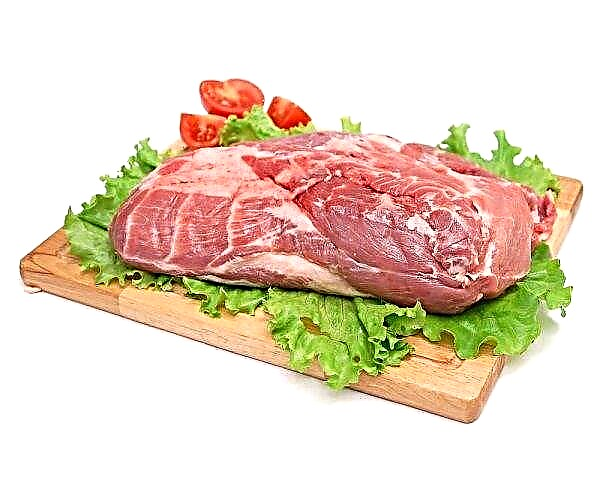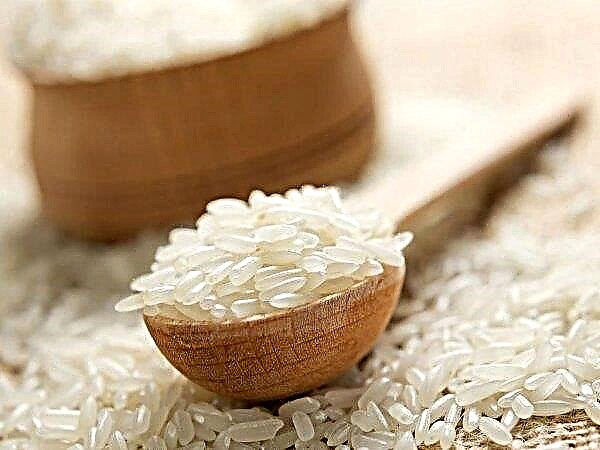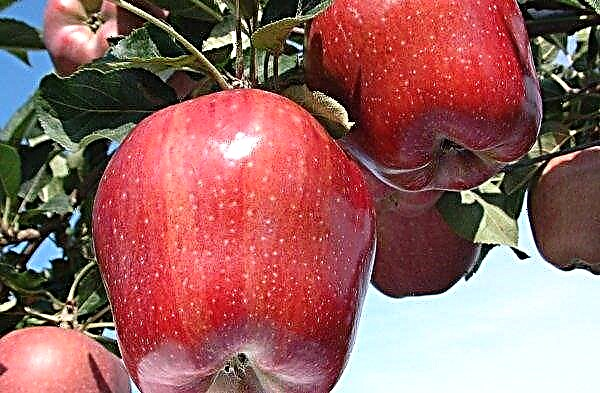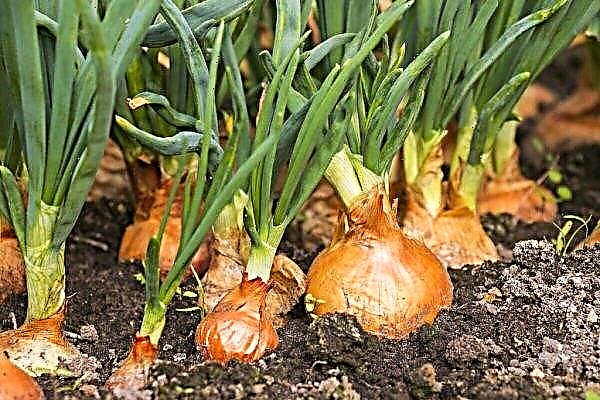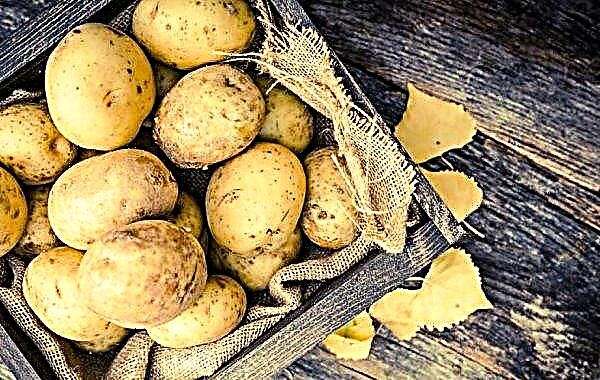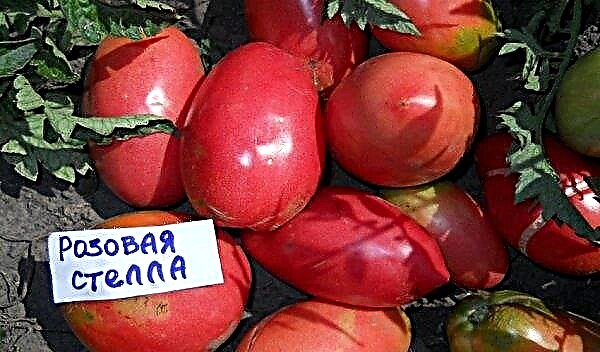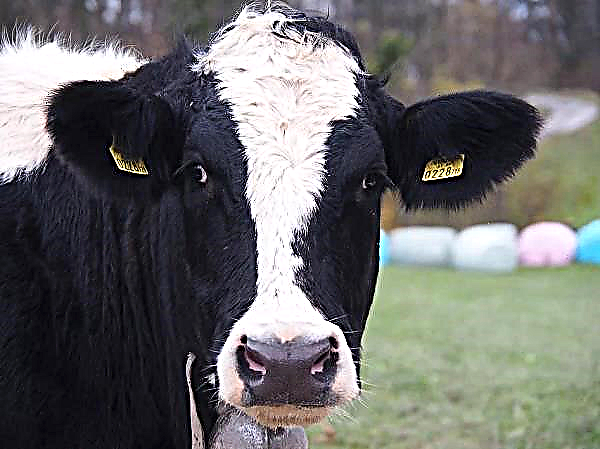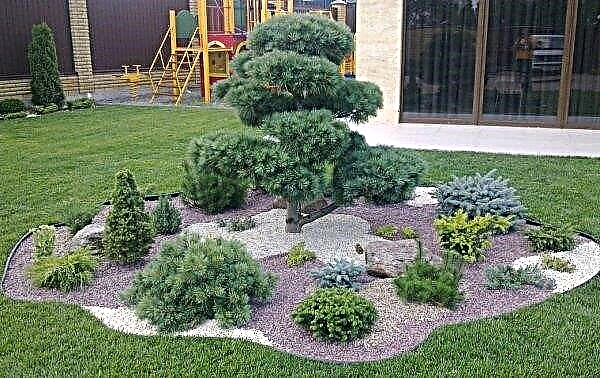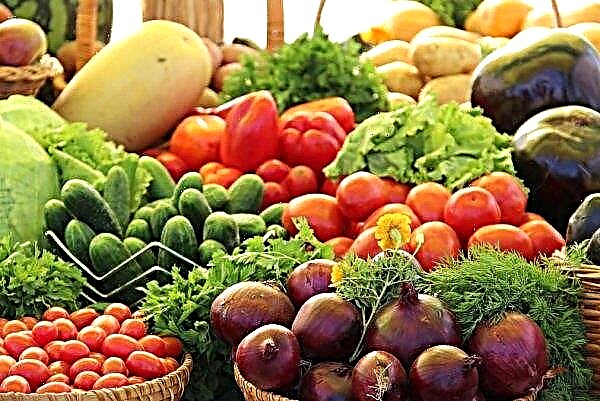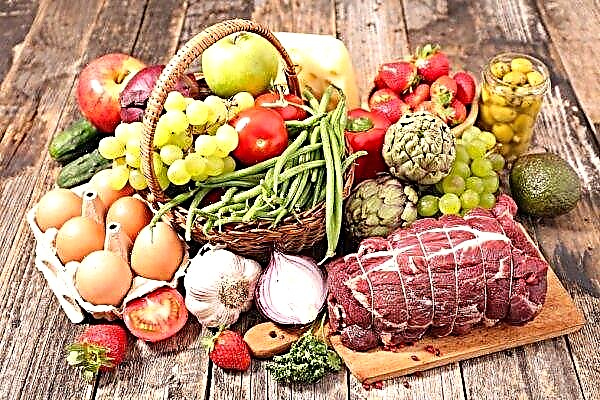Today in household plots you can find not only those vegetables that have been grown by gardeners from generation to generation, but also those that have become popular not so long ago. Eggplants are among the crops that have not earned the attention of all vegetable growers, but are always popular among gourmets. The king of the F1 market is one of these varieties. All the wonderful characteristics of this vegetable can be guessed from the name itself. Let's consider in more detail what is remarkable for this variety.
Selection and botanical description of the culture
The King of the Market variety was developed by the Russian company NK Russky Ogorod as a result of crossbreeding of the gardener Dream variety, resistant to low temperatures, and resistant to various diseases of the solanaceous variety Prince. The King of the Market was entered in the State Register in 2009.
Important! With well-organized care for the variety, the King of the market almost always manages to avoid deformed and curved fruits.
The king of the market is an early ripe hybrid eggplant variety. Its fruits are dark purple with a blue-black tint, are distinguished by the absence of bitterness. Eggplant of this variety is transportable and resistant to various weather conditions, they are able to be stored for a long time.

Their size is about 22 cm in length. The fruits have an elongated cylindrical shape, up to 6 cm in diameter. Their skin is quite thin, smooth and shiny, the flesh is characterized by a whitish-cream color, density and the presence of small soft seeds.
After sowing seeds and before planting seedlings to a permanent place, up to 70 days pass. You can plant seedlings both in greenhouses and in open soil.
Fruits are ready for harvest approximately 100–110 days after emergence. The yield indicators are quite high - up to 10 kg of eggplant with 1 m² of area. Bushes of the King of the market are characterized by compactness, shoots and leaves differ in a greenish-purple hue.
The culture is heat-loving, it is worth counting on a plentiful crop at a cultivation temperature of + 24 ° C. The variety is unpretentious to growing conditions and undemanding to care. Eggplant of this variety is distinguished by high taste characteristics. They can be stewed, fried, salted, pickled, prepared for the winter.
Advantages and disadvantages
- Eggplant variety King of the market is characterized by a number of positive differences:
- stable and high yield;
- good taste of fruits;
- lack of bitterness;
- unpretentious to growing conditions;
- resistance to almost all fungal and infectious diseases of the family, as well as to attacks of harmful insects;
- resistance to cold and temperature changes;
- safety of all initial properties during long-term storage and transportation;
- fruits are universal in terms of consumption, characterized by the presence in their composition of many nutrients and nutrients.
Important! Collecting seeds of a hybrid variety King of the market does not make sense - it does not breed independently.
- It has a variety and several relative disadvantages:
- deformation, curvature of the fruit with improper care;
- the shape of the fruit is too elongated, which makes it possible to get them to the ground and become dirty;
- you need to buy seeds every year, because the variety is hybrid.
Self-growing seedlings
Eggplant King of the market is grown according to the scheme characteristic for most varieties of this vegetable. Cultivation takes place by the seedling method without presenting special requirements for the process itself.
Although all eggplants are grown almost in the same way, nevertheless, each variety has some features, which applies to the King of the market.
Sowing time
In the period from late February to early March, which depends on the climatic conditions of the territory, seeds are sown to obtain seedlings. In the southern regions, February is suitable for these purposes, in the middle lane - March.

The soil
The soil mixture for growing eggplant consists of turf land, humus, peat in a ratio of 2: 1: 0.3. Before sowing seeds, the soil must be decontaminated and heated. To carry out these procedures, the earth must be treated by irrigation with Phytosporin or a weak solution of potassium permanganate, and then covered with oilcloth or glass for up to 10 days.
Important! Eggplants are big lovers of loose soil, so the presence of peat in the soil mixture, which can make the soil as such, is mandatory.
Capacity for growing
Eggplant seeds can be planted in separate containers (cups, peat tablets), and in boxes. The most convenient option in terms of subsequent transplantation of seedlings to a permanent place of cultivation are plastic cups or peat tablets. Both options are optimal, the choice is only for the grower. Their volume should be up to 150 ml.
Seed preparation
Before sowing, the seeds should be checked for germination by placing them in a container with warm water. Those specimens that have sunk to the bottom are quality and ready to use. Eggplant seeds prepared for sowing should be pretreated in order to disinfect and stimulate their further productive growth.
For this, soaking for several days in a weak solution of potassium permanganate and in products specially designed to increase the growth rates of plants and their germination is suitable. You can buy growth stimulants in specialized stores.
Sowing seeds
Seeds are planted in cups or peat tablets one at a time, in boxes - at a distance from each other of at least one and a half centimeters. Seeds are placed to a depth of 1 cm. After sowing, the seed should be watered and covered with a transparent film or glass to maintain the necessary humidity.
Seedling Care
After 7 days after sowing, the first sprouts should hatch, at this time it is necessary to reduce the temperature regime to + 15 ° C. After 2 weeks, the seedlings will begin to grow stronger, after which the temperature should be raised to + 24 ° C.
When caring for eggplant seedlings, you need:Did you know? The use of eggplant in food helps to reduce cholesterol in the blood, improve the functioning of the heart, intestines, liver and kidneys.
- provide illumination, because young sprouts need access to light for 12-14 hours a day;
- try to water plants abundantly with warm water;
- protect seedlings from sharp jumps in temperature conditions.
Plants for growing seedlings should be away from windows and heating appliances.
Seedling hardening
About 14 days before the planned planting of eggplant seedlings in the soil, you need to start taking action to harden it. For this, the temperature regime at the place of growing seedlings should be gradually brought closer to natural. To this end, watering is reduced, the airing time becomes more frequent and prolonged.
After that, after some time, the seedlings can be taken out for several hours in a cooler place, with time you can leave them on the street at night, later the plants stay in the fresh air increases up to a day. If there is a threat of a drop in air temperature, then the seedlings can be additionally covered. The temperature should not fall below + 12 ° C. Hardening can make seedlings more resistant to unexpected frosts and many infections. Before planting in a permanent place, it is necessary to harden the plants with the sun, for which containers with seedlings are taken out several times a day in the sun and left for 15-20 minutes.
The temperature should not fall below + 12 ° C. Hardening can make seedlings more resistant to unexpected frosts and many infections. Before planting in a permanent place, it is necessary to harden the plants with the sun, for which containers with seedlings are taken out several times a day in the sun and left for 15-20 minutes.
It is not worth keeping eggplant seedlings in very comfortable conditions and overheating it before planting, because then it will become very tender and vulnerable, it will not take root well after transplanting, or it will not give the expected harvest.
Planting seedlings in a permanent place
Planting eggplant seedlings at a permanent place of cultivation is a responsible process that has a number of features.
The timing
The timing of planting seedlings of eggplant King of the market is largely dependent on weather conditions and on the place where it is planned to plant. It is permissible to plant seedlings in greenhouse conditions with heating in April, without heating in the second half of May, and in open soil in June.
Before planting, the soil should be covered with a film so that it can warm up to + 16 ° C. Eggplant is a rather heat-loving culture, so the air temperature at the place of plant growth should not be lower than + 22 ° C in sunny weather and not lower than + 18 ° C in cloudy.Important! Optimum temperature — this is the main condition for the harmonious development of eggplant at each stage of their development.
The age of seedlings before planting is from 65 to 70 days from the moment of sowing seeds. Each plant should have 5-6 true leaves.
Seat selection and crop rotation
Before planting eggplant, it is recommended to plan the place for their cultivation in advance. It must comply with the main condition: in the previous 1-2 years, potatoes, tomatoes, eggplants and other solanaceous plants should not have grown there, as well as these crops should not be in the neighborhood of the planted seedlings.

The place should be characterized by good illumination, but without direct sunlight, the maximum possible windlessness, the mandatory absence of drafts, the location of groundwater at a distance of 1.5 m. The soil should be loose, fertilized.
Bed preparation
Before planting eggplant seedlings, a number of rules must be observed:
- after the end of the previous garden season, from the autumn, all the remains of vegetable crops and weeds should be removed from the site;
- land should be dug from autumn or early spring;
- the soil is pre-fed with ash, organic or mineral fertilizers;
- seedlings are planted in moist, not dry soil.
Important! Positive for eggplant is the proximity to beans and thyme, which also can improve the taste characteristics of eggplant. Growing marigolds, nasturtium, catnip, coriander or tansy will help protect the eggplants from the attack of the Colorado potato beetle.
Scheme and depth of landing
A normal diet of one bush of eggplant can provide a site measuring 40x50 cm, therefore, when growing in rows, it is desirable to plant plants at a distance of 40 cm from each other in a row and 70 cm - between rows. From 1 calculation, from this calculation, from 4 to 6 bushes can grow.
This scheme is applicable for planting both in greenhouses and in open soil. With a denser planting, the development of eggplant deteriorates, and productivity decreases. To preserve the vertical position of the plants, furrows or holes should be made a few centimeters deeper than they were grown in containers.
They should be of such volume that the root of the plant along with the soil in which the seedlings grew freely is located in them. It is best to move the seedlings by transshipment from containers, without violating the integrity of the earthen coma.
Before planting a hole or furrow, you should feed it with ash, mineral fertilizers, pour plenty of water at the rate of up to 3 liters of water per 1 plant, then place seedlings and sprinkle it with dry earth. Then it is recommended to sprinkle the surface around the plant with mulch (peat, sawdust, straw, etc.).
With this technique, seedlings will take root and take root better. After planting, it is recommended to cover the seedlings with a film on top to create a small greenhouse effect, as well as to protect from direct sunlight.
Important! Planting seedlings is recommended in the evening, which will contribute to better adaptation of plants to new growing conditions.
Further outdoor care
Proper planting of seedlings is half the success in getting the eggplant harvest. King of the market. Particular attention in the future should be given to care when growing these plants.
Watering
Eggplants are moisture-loving crops. The eggplant seedlings planted on a regular place. The king of the market needs systematic watering. How often it should be produced depends largely on weather conditions.
To understand that the plant lacks moisture can be by the presence of drooping leaves, fallen flowers and ovaries, yellowed fruits. Lack of a sufficient level of moisture can lead to the appearance of dense patches inside the fruit, and its overabundance - to rotting stems and fruits.
The first time after planting, the seedlings are watered after 2-3 days, after which 10 days it should be watered daily. In the future, seedlings are recommended to be watered once every 2-3 days, during a drought - every day, preventing the soil from drying out. It is recommended to carry out watering in the morning or in the evening. Eggplant is poured with warm water under the root, avoiding contact with the stems and leaves.
Fertilizer application
It is recommended to fertilize seedlings of eggplant King of the market 3 times in one season:
- a week after planting, when the seedlings take root and the roots can absorb nutrients;
- as soon as the plants begin to bloom;
- during fruit ripening.
For the first feeding, complex mineral fertilizers with the addition of magnesium sulfate are used. For the second top dressing, it is recommended to use mineral fertilizers based on potassium, manganese, iron.
Mineral fertilizers based on nitrogen and phosphorus are suitable for the third top dressing. When top dressing, it is recommended to use organic fertilizers, cow manure or bird droppings are best suited.
You can also feed with ash, nettle infusion. The main thing during feeding is not to abuse fertilizers, otherwise the rapid growth of plants will negatively affect their flowering, development and quality characteristics of the future crop. During the cold season, top dressing should not be carried out, this can cause root rot.
Did you know? Eggplant is able to eliminate edematous manifestations in the body and normalize the water-salt balance.
Soil care
After the seedlings take root in a new place, it needs to be loosened. This should be done carefully, since the root system of the eggplant is not very deep.

Plant care also involves the constant weeding and removal of weeds that take nutrients from the crop. The soil near each bush should be mulched to slow down the process of moisture evaporation.
Tying bushes
Eggplant seedlings The king of the market can break under the weight of the fruit, so it should be tied in time. When the plant reaches a height of up to 30 cm, the stem is tied to the trellis, while leaving a margin of space for the growth of the stem and an increase in its thickness. As seedlings develop, tying eggplant should be repeated every few weeks.
Important! Do not forget to remove the side shoots, while properly forming a bush.
Pest and disease protection
Variety King of the market shows relative resistance to diseases and pests characteristic of eggplant. But the risk of infection still remains.
Among the common eggplant diseases include:
- Black leg a sign of which is a darkened and collapsed root neck. This disease causes the death of the plant, so the only thing that can be done in case of infection is to remove the plant from the garden, dry the soil, dig it up, sprinkle with wood ash.
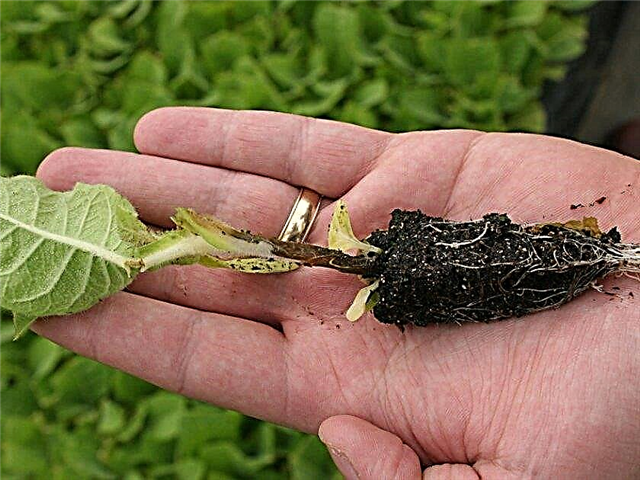
- Late blight, characterized by the appearance of rapidly increasing dark brown spots on the lower leaves, fruits, inflorescences. Most often this happens after rains. Plants should be treated with agents containing copper.
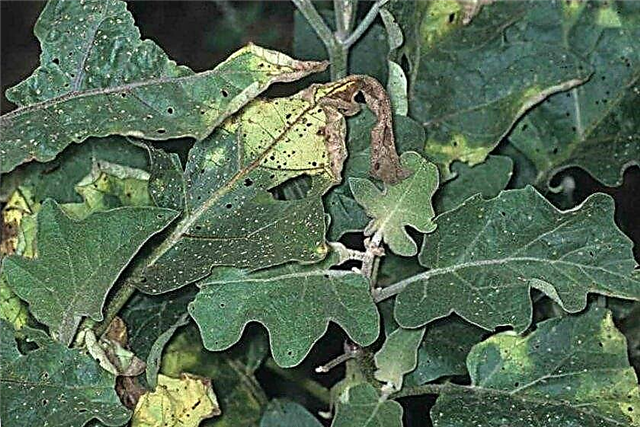
The most dangerous pests for eggplant include the Colorado potato beetle, aphid, and naked slug. Cope with these insects can help specially designed chemicals - insecticides: Fitoverm, Actellik, Confidor.
Did you know? Eggplant is characterized by a low calorie level, which makes it a dietary product that quickly saturates the body, preventing it from gaining excess weight. In addition, eggplants during heat treatment practically do not lose their useful characteristics.
Harvesting
Variety King of the market gives fruits gradually, so they should be picked selectively, as they ripen, every 3-4 days. The main thing is to harvest the fruits in a timely manner, which helps the more rapid emergence and maturation of the following specimens.
Fresh storage of the crop should take place in a dark and cool place with a humidity level of about 80%. Low humidity can cause loss of juiciness of the fruit and wrinkled peel.
You can cook a variety of dishes from eggplant. They are sour, canned, pickled, fried, stewed, baked, stews, caviar, salads are prepared from them, and they also make excellent snacks.
Did you know? Eggplants in overripe form should not be used, because they differ in the content of solanine - a toxic substance.
The cultivation of eggplant varieties King of the F1 market is not difficult, if you stock up with the necessary knowledge. The result is sure to please, because this variety has a fairly high level of yield and the possibility of long-term storage of fresh fruits.



